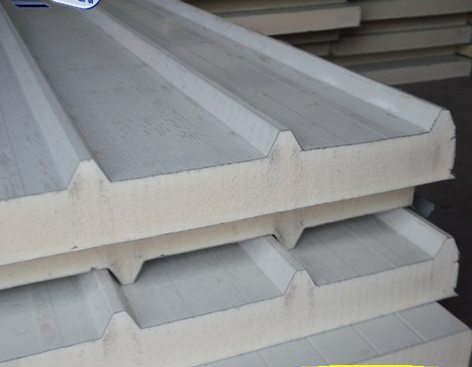
unheard
Advanced Member-
Posts
1,237 -
Joined
-
Last visited
Content Type
Profiles
Forums
Downloads
Everything posted by unheard
-
That's usually what causes the most leaks in the valleys - accumulated debris or dust restricting the flow. Narrow valley liners is another common issue.
-
From what I remember, they've asked me to send them four 1-liter bottles. Their recommendation is to buy drinking water bottles, empty them out and then refill with well water. A process that largely eliminates potential cross-contamination. They also offer the convenience service (extra cost), when they come to your site to collect the samples. https://www.testtech.co.th/public/th
-
Can elaborate on this? Do they sell different ranges (models)? How does affect us as consumers if there's a commercial line of their products, oriented at the commercial side of the market?
-
Surprised to see that they've neglected to install a pump pad. Isn't it a required feature? Obviously, not on your well since you haven't applied for a permit. Still, there's a good reason to have one as to prevent surface water from entering the well. Regarding the testing lab... Have you already selected one? I've used one located in Bangkok. Let me know if you need their contact info. Their tested parameters: PH, Turbidity, Color, Total Hardness, Chloride, Total Iron, Manganese, Nitrate, Sulfate, Total Dissolved Solids, Arsenic, Cadmium, Copper, Lead, Mercury, Selenium, Zinc, Cyanide, Fluoride, Non Carbonate Hardness, Standard Plate Count, Coliform Bacteria, E. Coli
-
Was the Mr. Slim of the inverter kind? I see them being heavily promoted at very good prices. Would you buy one again given a choice?
-
What will be the usage case for the well water?
-
After how many years?
-
2 meters are fine (maybe), yet 3 meters - is really pushing it. I think the OP has 3 meters or more on his mind. Was your house design permitted?
-
The example shows the un-permitted car port - no one really cares about the structural integrity of those. If you plan to build a permitted house then there's no way a structural engineer will undersign such a design for a dwelling.
-
The roof overhangs can not be just enlarged at will without being given any consideration to the extensions' structural support which can lead to wind damage. Do you plan on adding the necessary (judging by your roof dimensions) supporting columns? The extra supporting columns are not a trivial add-on, money-wise.
-
Thank you!!!????
-
I can not find a single instance of that name anywhere on the internet. Can you please point in the right direction? Thanks.
-
But isn't it a "common practice" in about every village to at least to notify the village head of the pending construction? It might not be a "legal" requirement but the refusal to do so might cost you dearly in the long run.
-
Sai Gaulea? I have a problem finding the botanical name. Is that how the Thais tend to pronounce it? How far apart did you plant them?
-
Tiled roof without gable vents? I think the only good option is to insulate your ceilings as to prevent heat transmission from the attic. Or the spray-on insulation, sprayed on the tiles from the underneath. As in addition to every other measure taken to keep your building as cool as possible. A perfectly insulated roof would still make no difference if the rest of the house is thermally leaky. e.g. walls, windows, doors and even floors could be all big sources of thermal energy entering the house.
-
Whirlybirds would be better than nothing. They come in different sizes. I'd assume the bigger ones might make a difference, depending on the install and general roof design.
-
Well, yes, it's better than nothing, that's for sure. I have two different roofs, with both types of insulation installed. Their thermal properties differ, a lot (I think - don't have any scientific evidence). The picture shows that yours is still in very good condition and probably will not de-laminate any time soon. But there are many visible cases of de-lamination out there. Don't know if it's related to the quality of the materials or environmental exposure, maybe both.
-
Same here. the nearest Bluescope store is close to a hundred kilometers away. The delivery charge wasn't cheap (even with a discount). They did sent their rep to check the site, to verify all dimensions, just prior to the order going into production. At least one of the local non-Bluescope metal forming shops also offer PU insulation but only sells Chinese (or Korean, not sure) roof metal, which is significantly cheaper in comparison.
-
Agreed. The spray glued one is worthless.
-
I think so - the second one is the kind of an insulation material (not as thick) that I was talking about. VS
-
Well, not really. There will be close to zero air circulation in that situation.
-
At the factory? There are multiple roof metal forming shops spread all over the country. Many of those offer PU insulation. And just about every Bluescope affiliated shop offers PU insulation as an option.
-
That's right since the ridge vents need to be designed and installed in a certain way as to prevent the wind driven rain water from getting blown into the ridge opening. There are numerous companies in Australia and the U.S. that sell properly designed ridge vent systems. There are none in Thailand that I'm aware of (not sure about the commercial buildings applications since it's a completely different market segment). If you decide to go with such an option here then it would definitely be some kind of a custom fabrication.
-
PU Expensive? As relative to the thermal properties it provides? I'd say it's a bargain in reference to reduction of the cooling costs. PU doesn't de-laminate, the other "thin" stuff does and is mostly worthless in comparison.
.png.3b3332cc2256ad0edbc2fe9404feeef0.png)






